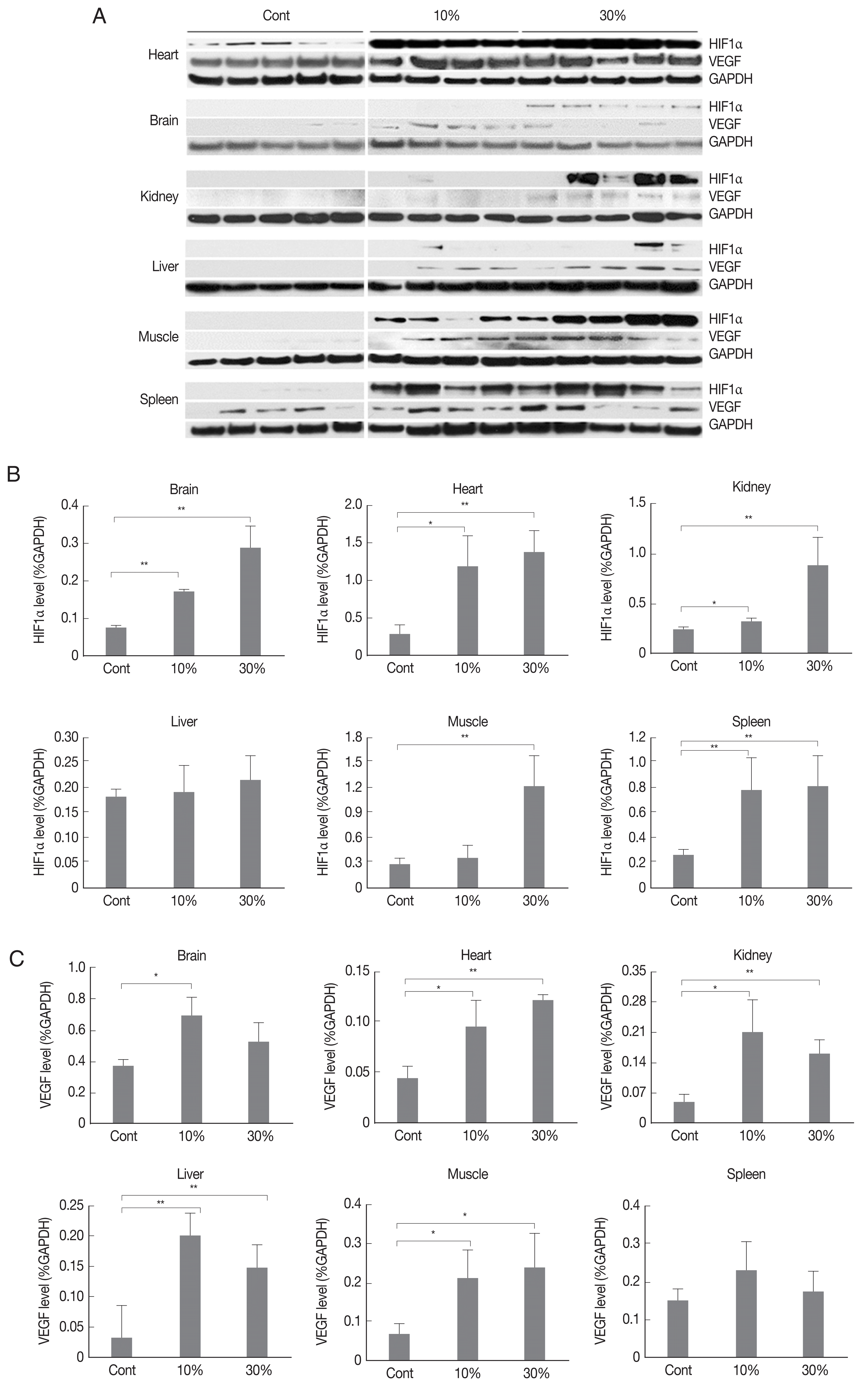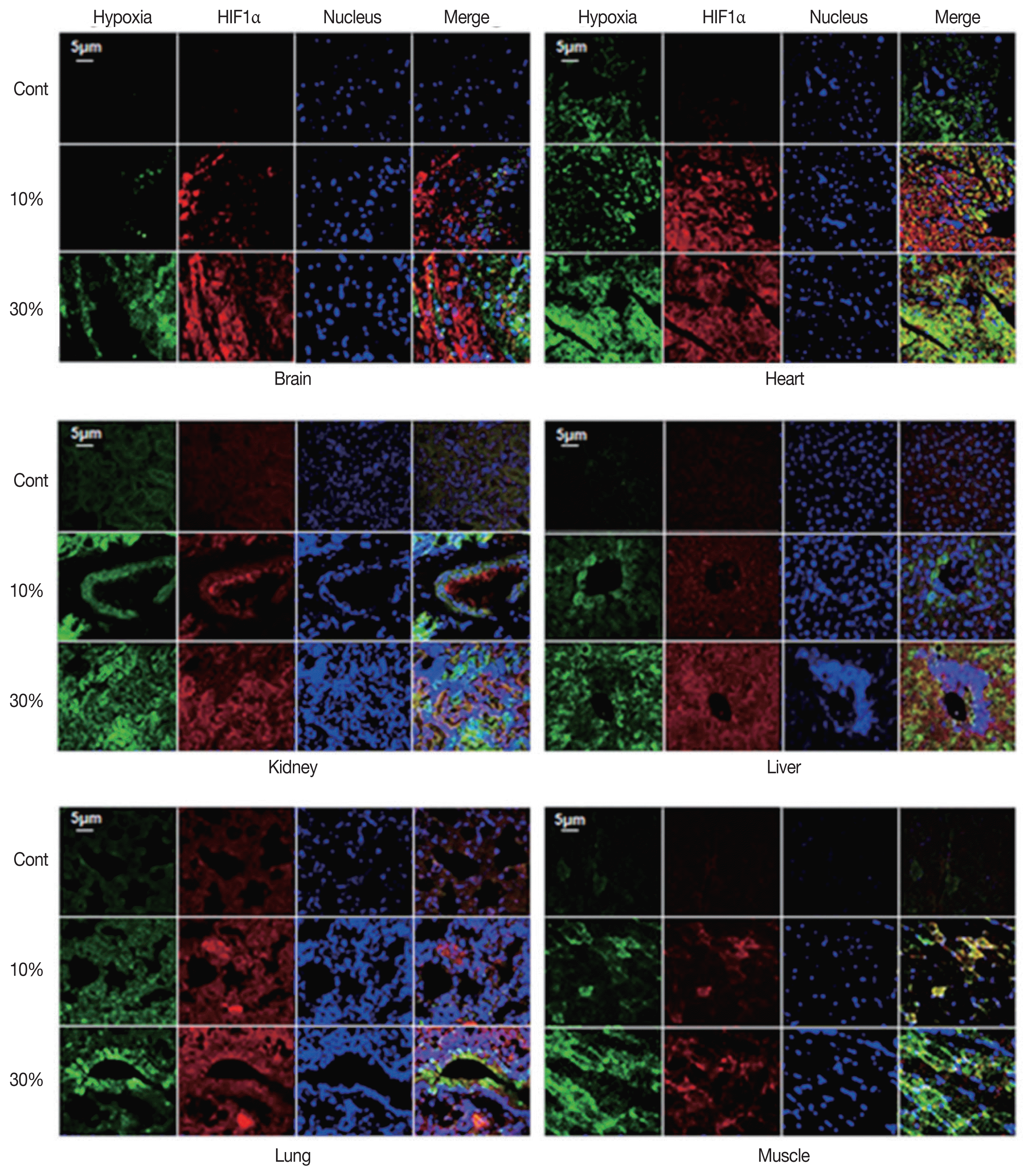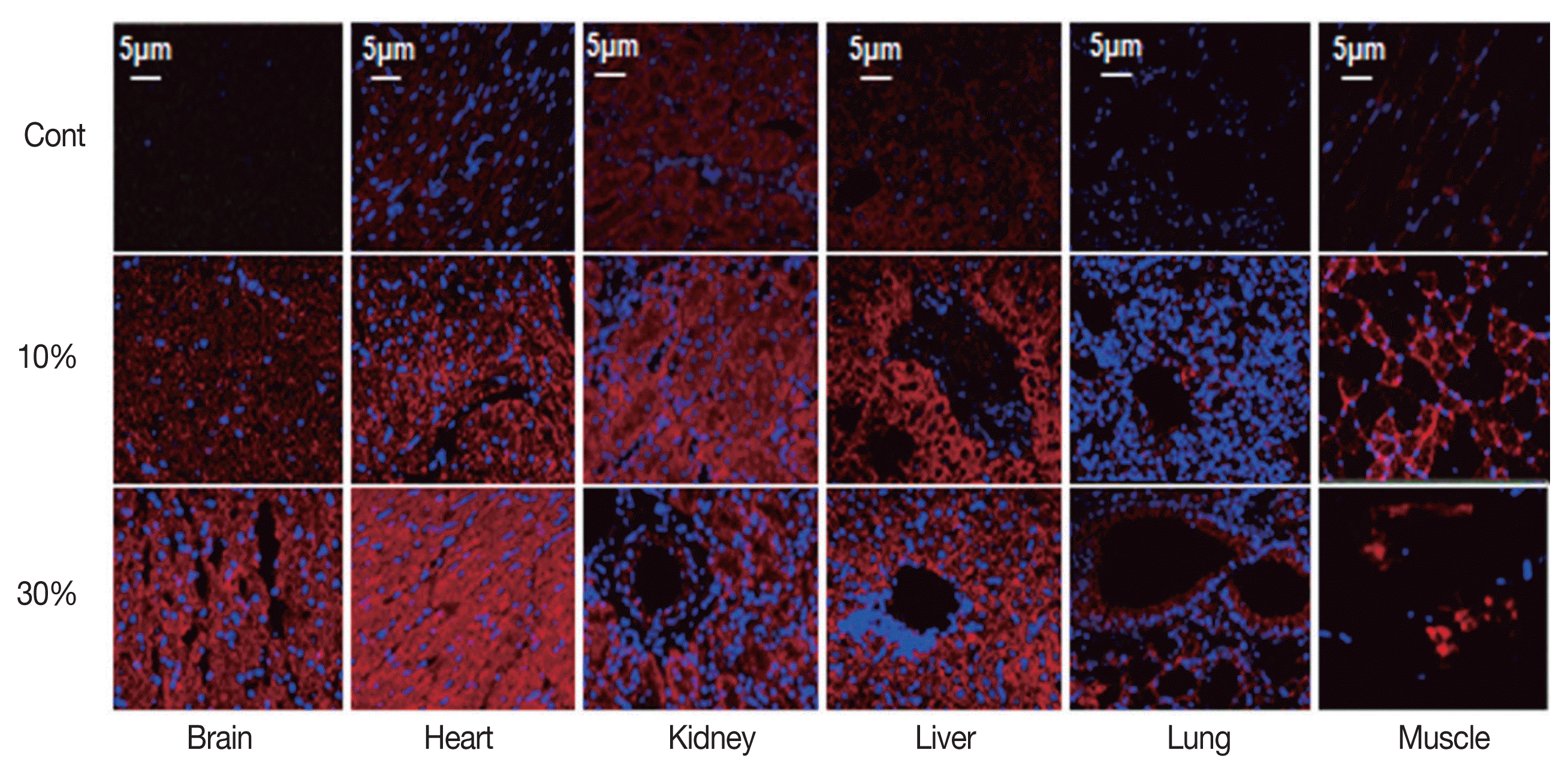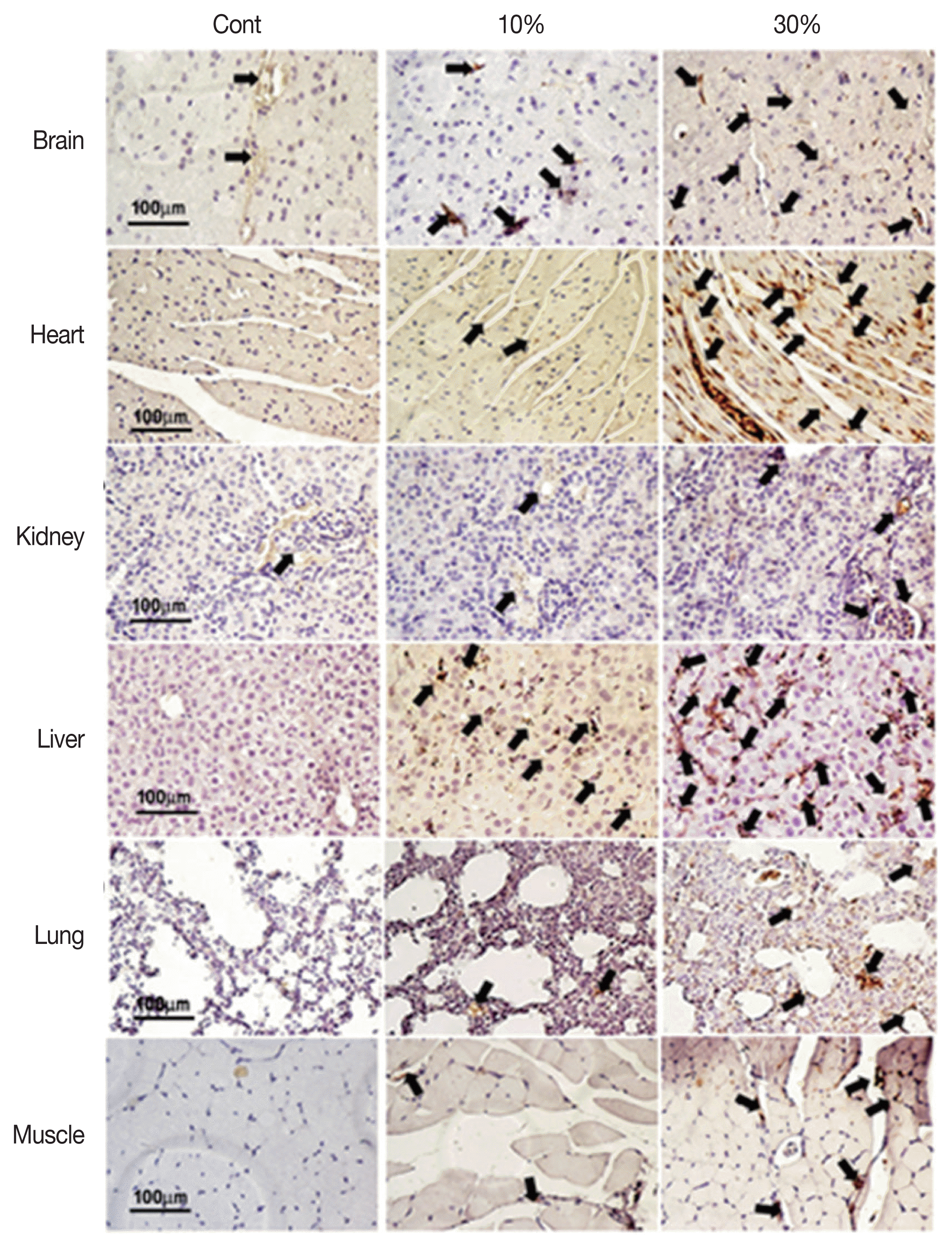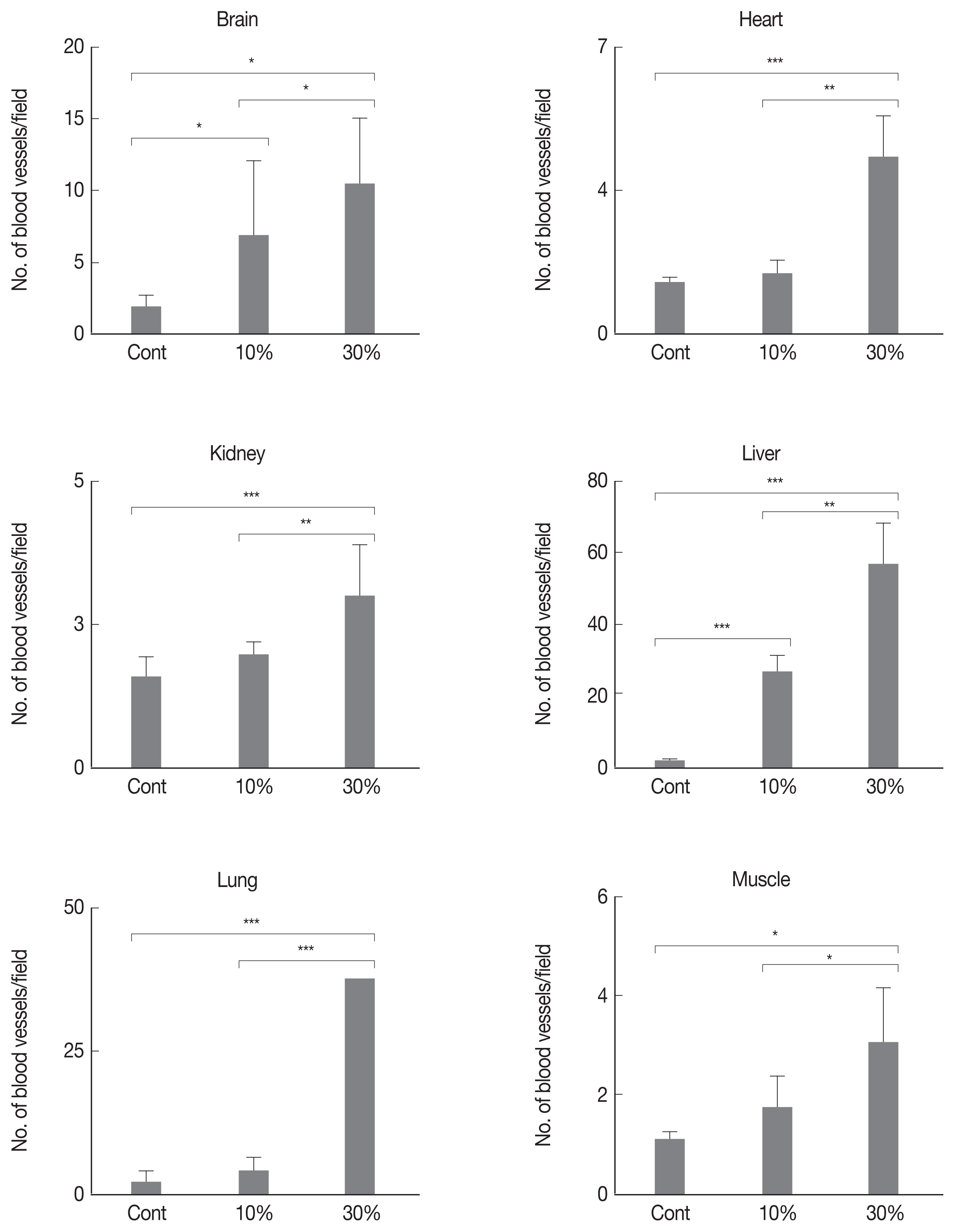1. Ng S, March S, Galstian A, Hanson K, Carvalho T, Mota MM, Bhatia SN. Hypoxia promotes liver-stage malaria infection in primary human hepatocytes in vitro.
Dis Model Mech 2014;7:215-224.


2. Hansen DS. Inflammatory responses associated with the induction of cerebral malaria: lessons from experimental murine models.
PLoS Pathog 2012;8:e1003045.



3. Engwerda CR, Beattie L, Amante FH. The importance of the spleen in malaria.
Trends Parasitol 2005;21:75-80.


4. Deininger MH, Winkler S, Kremsner PG, Meyermann R, Schluesener HJ. Angiogenic proteins in brains of patients who died with cerebral malaria.
J Neuroimmunol 2003;142:101-111.


5. Muehlenbachs A, Mutabingwa TK, Edmonds S, Fried M, Duffy PE. Hypertension and maternal-fetal conflict during placental malaria.
PLoS Med 2006;3:e446.



6. de Souza JB, Riley EM. Cerebral malaria: the contribution of studies in animal models to our understanding of immunopathogenesis.
Microbes Infect 2002;4:291-300.


7. Basir R, Rahiman SF, Hasballah K, Chong W, Talib H, Yam M, Jabbarzare M, Tie T, Othman F, Moklas M, Abdullah W, Ahmad Z.
Plasmodium berghei ANKA Infection in ICR Mice as a Model of Cerebral Malaria.
Iran J Parasitol 2012;7:62-74.


8. Craig AG, Grau GE, Janse C, Kazura JW, Milner D, Barnwell JW, Turner G, Langhorne J; participants of the Hinxton Retreat meeting on Animal Models for Research on Severe Malaria. The role of animal models for research on severe malaria.
PLoS Pathog 2012;8:e1002401.



9. Hall N, Karras M, Raine JD, Carlton JM, Kooij TW, Berriman M, Florens L, Janssen CS, Pain A, Christophides GK, James K, Rutherford K, Harris B, Harris D, Churcher C, Quail MA, Ormond D, Doggett J, Trueman HE, Mendoza J, Bidwell SL, Rajandream MA, Carucci DJ, Yates JR 3rd, Kafatos FC, Janse CJ, Barrell B, Turner CM, Waters AP, Sinden RE. A comprehensive survey of the Plasmodium life cycle by genomic, transcriptomic, and proteomic analyses.
Science 2005;307:82-86.


10. Risau W. Mechanisms of angiogenesis.
Nature 1997;386:671-674.


11. Banai S, Shweiki D, Pinson A, Chandra M, Lazarovici G, Keshet E. Upregulation of vascular endothelial growth factor expression induced by myocardial ischaemia: implications for coronary angiogenesis.
Cardiovasc Res 1994;28:1176-1179.


12. Shweiki D, Itin A, Soffer D, Keshet E. Vascular endothelial growth factor induced by hypoxia may mediate hypoxia-initiated angiogenesis.
Nature 1992;359:843-845.


13. Ema M, Taya S, Yokotani N, Sogawa K, Matsuda Y, Fujii-Kuriyama Y. A novel bHLH-PAS factor with close sequence similarity to hypoxia-inducible factor 1alpha regulates the VEGF expression and is potentially involved in lung and vascular development.
Proc Natl Acad Sci USA 1997;94:4273-4278.


14. Hioki A, Yoshino M, Kano S, Ohtomo H. Pathophysiology of hypoxia in mice infected with
Plasmodium berghei
.
Parasitol Res 1987;73:298-302.


15. Canavese M, Spaccapelo R. Protective or pathogenic effects of vascular endothelial growth factor (VEGF) as potential biomarker in cerebral malaria.
Pathog Glob Health 2014;108:67-75.



16. Furuta T, Kimura M, Watanabe N. Elevated levels of vascular endothelial growth factor (VEGF) and soluble vascular endothelial growth factor receptor (VEGFR)-2 in human malaria.
Am J Trop Med Hyg 2010;82:136-139.



17. Kang YJ, Jo JO, Cho MK, Yu HS, Cha HJ, Ock MS. Trichinella spiralis infection induces beta-actin co-localized with thymosin beta4.
Vet Parasitol 2012;187:480-485.


18. Yun KY, Ko EJ, Kim HY, Lee JY, Eo WK, Ock MS, Kim HS, Kim KH, Cha HJ. Long interspersed element-1 open reading frame 1 protein expression profiles in ovarian cancers.
Genes Genom 2017;39:1157-1162.

19. Wang D, Stockard CR, Harkins L, Lott P, Salih C, Yuan K, Buchsbaum D, Hashim A, Zayzafoon M, Hardy RW, Hameed O, Grizzle W, Siegal GP. Immunohistochemistry in the evaluation of neovascularization in tumor xenografts.
Biotech Histochem 2008;83:179-189.



20. Elias RM, Correa-Costa M, Barreto CR, Silva RC, Hayashida CY, Castoldi A, Gonçalves GM, Braga TT, Barboza R, Rios FJ, Keller AC, Cenedeze MA, Hyane MI, D’Império-Lima MR, Figueiredo-Neto AM, Reis MA, Marinho CR, Pacheco-Silva A, Câmara NO. Oxidative stress and modification of renal vascular permeability are associated with acute kidney injury during
P. berghei ANKA infection.
PLoS One 2012;7:e44004.



21. Boeuf P, Tan A, Romagosa C, Radford J, Mwapasa V, Molyneux ME, Meshnick SR, Hunt NH, Rogerson SJ. Placental hypoxia during placental malaria.
J Infect Dis 2008;197:757-765.



22. Ataide R, Murillo O, Dombrowski JG, Souza RM, Lima FA, Lima GF, Hristov AD, Valle SC, Di Santi SM, Epiphanio S, Marinho CR. Malaria in pregnancy interacts with and alters the angiogenic profiles of the placenta.
PLoS Negl Trop Dis 2015;9:e0003824.



23. Yang Y, Liu Q, Lu J, Adah D, Yu S, Zhao S, Yao Y, Qin L, Qin L, Chen X. Exosomes from
Plasmodium-infected hosts inhibit tumor angiogenesis in a murine Lewis lung cancer model.
Oncogenesis 2017;6:e351.



24. Chen L, He Z, Qin L, Li Q, Shi X, Zhao S, Chen L, Zhong N, Chen X. Antitumor effect of malaria parasite infection in a murine Lewis lung cancer model through induction of innate and adaptive immunity.
PLoS One 2011;6:e24407.






